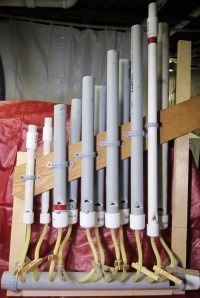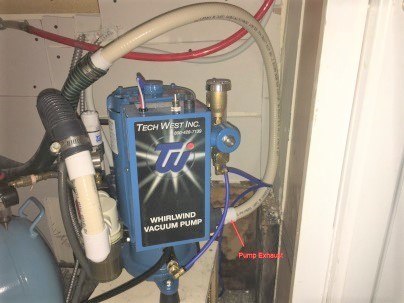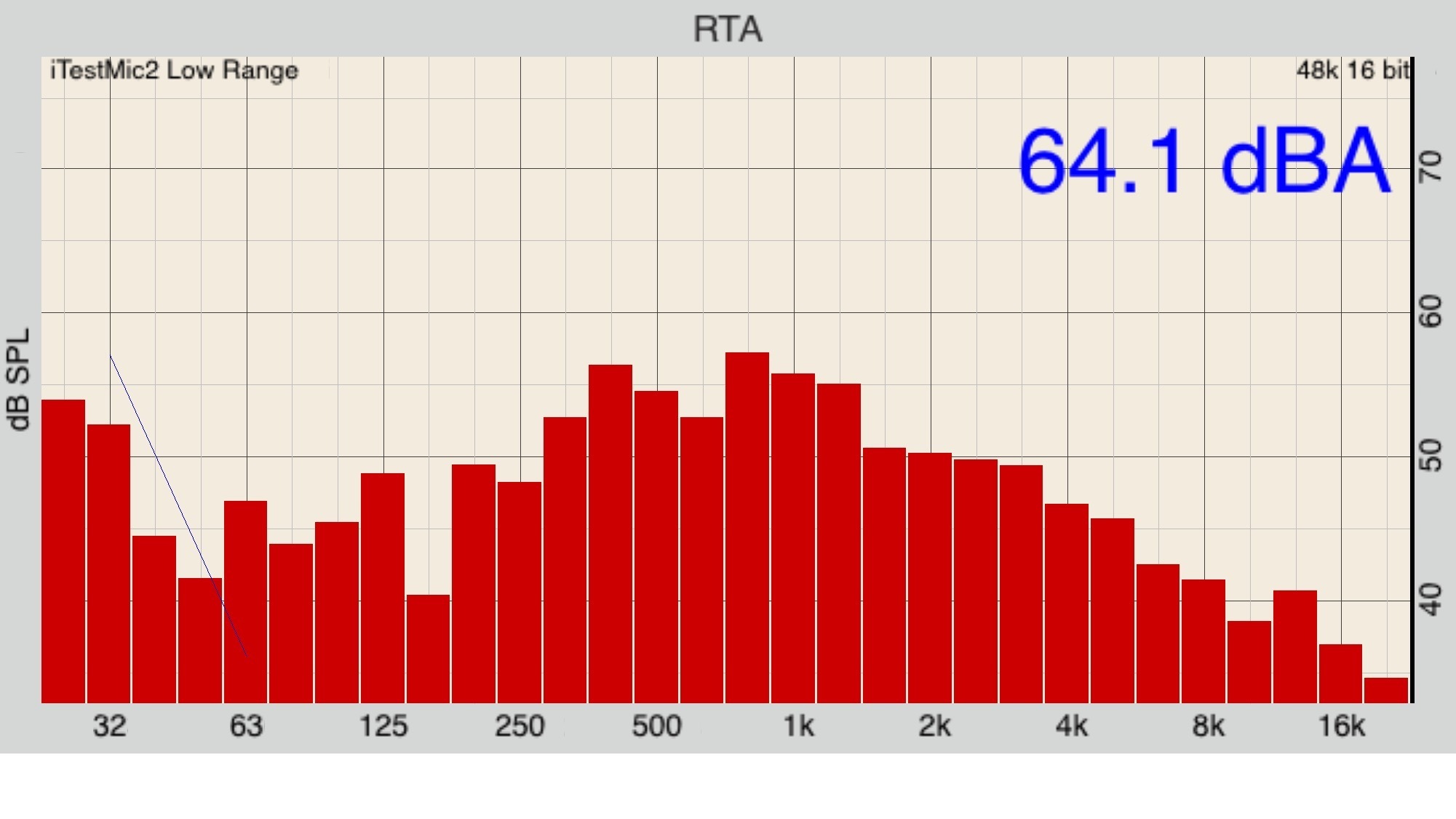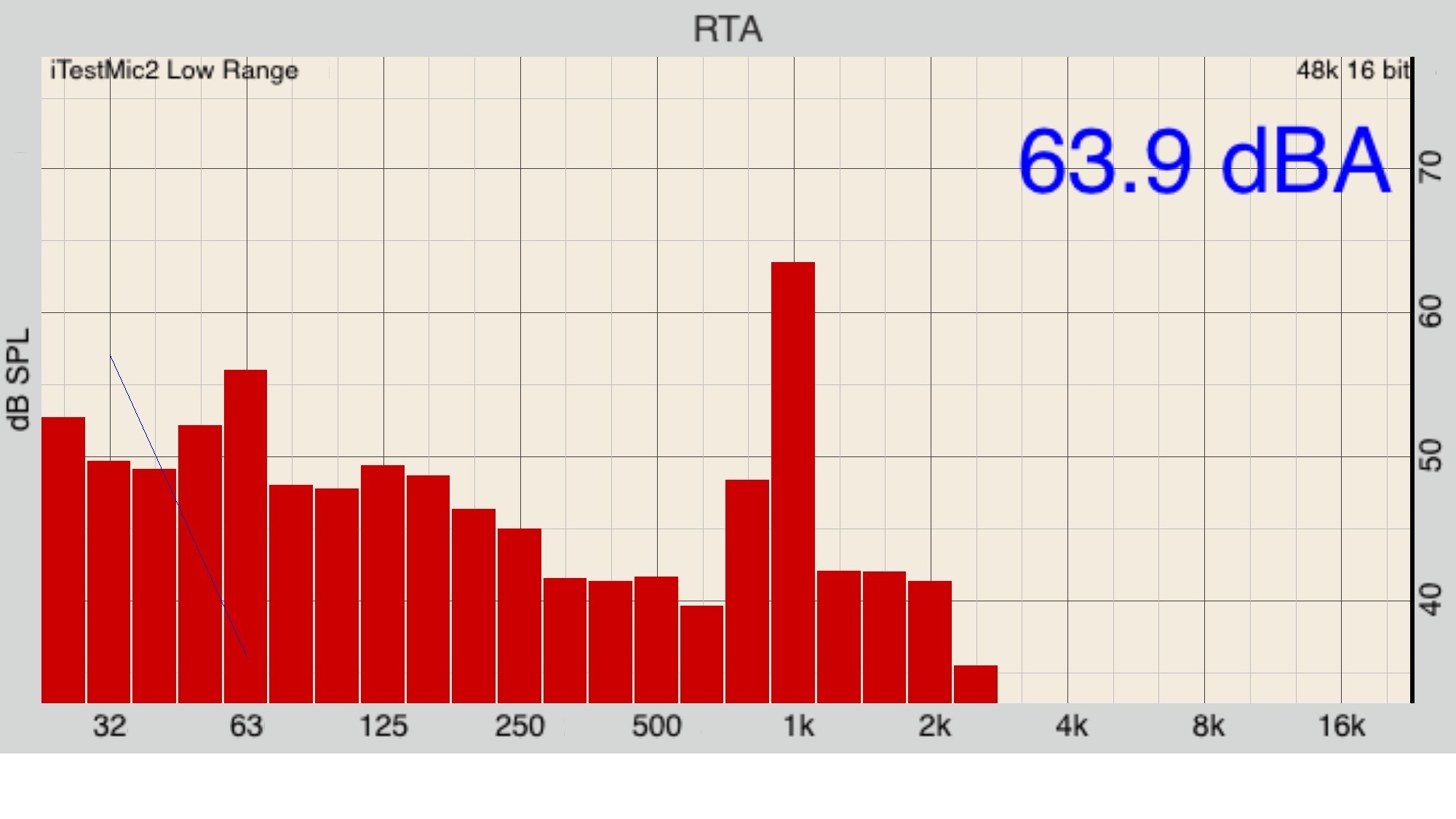Recently a client called me to investigate noise in his commercial unit located next to a dentist’s office. I have had a similar case previously, but this one was different. The noise sounded like an organ pipe whistle.
More...
Noise Investigation
After some noise investigation, the noise source appeared to be mechanical equipment located in a small room in the dental clinic adjacent to partition separating the client’s unit from the dental office. The following equipment was under sink counter space:
The partition wall in question consisted of 3.5” steel studs with drywall on both sides. There was a large cavity inside the partition, at least 8 inches deep. This cavity appeared to contain drainage and water supply pipes and was filled with rock wool insulation. I have confirmed presence of insulation with a feeler rod through electrical outlet opening on the wall.
Sound Pressure Level Test
As part of the noise investigation, I have measured the noise levels in the small room containing the equipment in the dental clinic. The test result is shown in Image 1 below.
Image 1 - Noise level spectrum at vacuum pump location
I have then tested noise level in client’s unit, in front of washroom that is adjacent to the location of the noise source, with washroom doors open. The result is shown in Image 2 below.
Image 2 - Noise level spectrum in the adjacent unit
Analysis of Test Results
Noise investigation showed that the noise of the mechanical equipment (Image 1) is normal. The recorded 1/3 octave band spectrum is as expected from this type of equipment.
Image 2, tested in the middle of hallway in front of open washroom door in the adjacent unit, shows strong harmonic signal (whistling) at about 1 kHz. The noise is almost as loud in decibels, as the source noise behind a drywall partition. This is very unusual for this type of noise investigation; the wall seems to provide no sound attenuation. The spectrum of this noise (Image 2) appears unrelated to the source noise (Image 1). Most reasonable explanation of this noise is that it is caused by a resonance inside the partition separating the two units.
Troubleshooting the Source of Noise
Furthermore, the dentist indicated that when the toilet in their patient’s washroom (not adjacent to the room with the vacuum pump) was removed for repairs, one could hear the same high-pitched noise emitted by the open drainage stack. This indicates that the noise is transmitted through the building’s sanitary drain system.
I have then inspected manufacturer’s installation instructions for the vacuum pump and found that the equipment was not installed correctly. Exhaust separator was not installed. This omission was confirmed by the manufacturer of the pump as the cause of the noise.
The noise investigation concluded that the harmonic noise heard in my client’s unit was caused by incorrect installation of vacuum pump in adjacent dental office. The exhaust from the pump was connected directly to the building’s plumbing (Photo above) and generated harmonic resonant noise within the sanitary plumbing pipes. It sounded like a musical organ pipe. The plumbing pipes are located inside the wall separating the units in question, and the noise was transmitted through drywall into the adjacent unit.
Fixing the Noise Problem
As recommended by the vacuum pump manufacturer, correct installation requires the use of an exhaust separator between the pump and the drain. The pump’s supplier and installer should add this item to the vacuum pump’s installation. Installation instructions for the vacuum pump require that the exhaust separator be used.
If you have comments about this article, please fill in and submit the form below.
If you would like to contact the author, click the orange button below.



